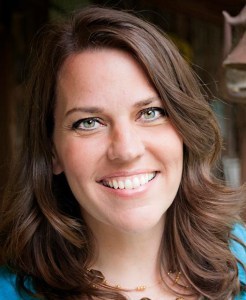Mastering the Art of the Cliffhanger Chapter Ending
People are always talking about how important it is to keep the reader interested. Retain their interest. Keep them turning pages all the way until the end. One way to do this, I keep hearing, is though the cliffhanger chapter ending. But no one ever tells you HOW to write the cliffhanger effectively. My biggest question: If you don’t end your chapter at the end of your scene, how DO you end your scene?
Well, I’m happy to welcome Rebecca Belliston, who’s here to answer that question and offer some advice on how to write cliffhanger endings well.

Courtesy: Morguefile.com
One of the best things an author can hear from a reader is, “I’m so exhausted. I stayed up until four in the morning to finish your book.” And then they go on to complain about how they’re going to fall asleep in class or at an important meeting.
When this happens to me, I swallow a grin and say, “Oh, I’m sorry I kept you up so late.” But really, I’m not sorry. Not at all. Because if they were willing to give up sleep, they must have really liked the book.
The Importance of Chapter Endings
Often writers are told to work on the hook of their story, making readers interested in the characters and setting within the first page or two. And while that’s important (and extremely daunting), it’s equally important to keep the reader reading all the way until THE END. Because, let’s face it. We’ve all started books we’ve never finished. Heaven forbid our readers do that with our masterpieces, right?
But I’ve found that the following formula works pretty well to keep readers reading:
End chapters with a cliffhanger as often as possible.
Think about TV shows, especially dramas. They cut to commercial at the height of the scene’s intensity, not at its resolution. Even in reality shows, the music builds to a dramatic swell and then, BAM! You’re watching a Geico commercial. They do that so you don’t leave. So you don’t get distracted grabbing Oreos and a glass of milk during those two minutes and forget to come back.
But as authors, we’re tempted to stop chapters when the conversation winds down or the conflict is resolved—basically, at the end of the scene. It’s a natural break in the story, so it seems like a sensible place to end the chapter. However, if we end every chapter with a resolved scene, readers might leave for those Oreos and find something else to do. When it comes to holding reader interest, knowing when to end a chapter matters almost as much as knowing what content to include within the chapter.
Suzanne Collins did an amazing job of this in the Hunger Games. Chapter after chapter, she left us hanging:
“Effie Trinket crosses back to the podium, smoothes the slip of paper, and reads out the name in a clear voice. And it’s not me.
It’s Primrose Everdeen.”
I’ll tell you, that one grabbed my attention. So did this one:
“For a moment, everything seems frozen in time. Then the apples spill to the ground and I’m blown backward into the air.”
Now, would you stop there to go get a treat? To sleep? No way. You’d fly through the pages, hardly even noticing the chapter breaks because the story was flowing so seamlessly.
So How Do You End Scenes Without Using Chapter Breaks?
1) End the scene in the middle of a chapter. Then, a few pages or paragraphs later, when your scene does end, just use the classic three-star break to show that a new scene is beginning:
***
For example, end the chapter with Humpty Dumpty in the act of falling off the wall, so the reader has to start a new chapter to find out what happens. The next chapter begins with him broken on the ground, helpless. A little later in the chapter, when you need to end the scene and switch to the POV of the kings’ men, do a little *** to make the jump.
Readers are less likely to put down a book after this kind of break because it’s softer than a chapter break. They also don’t have to physically turn the page to move on to the next scene; the rest of the text is right there on the same page, enticing them to continue reading.
2) Use a simple transition sentence to change scenes.
Since the Hunger Games often ended chapters with cliffhangers, many of the scenes themselves ended in the middle of the chapter. To make this work, Suzanne Collins used one or two transitional sentences to indicate a scene break. She even skipped days with a simple transition sentence like this one: “Even two days later, Katniss still couldn’t…”
(NOTE: This only works if you aren’t jumping POVs. If you’re changing the POV, you must use a chapter break or a *** to show the change.)
3) If you do need to end a scene at the end of the chapter, leave something unresolved— something in the air that’s big enough to make the reader turn the page. Chances are that if you’re aware that you need to leave something hanging, you’ve found a possible spot to end the scene.
Use these techniques and you’ll greatly reduce the number of bookmark-able places in your story. Watch TV shows and read books to see how it’s done. The more you practice writing chapter and scene endings this way, the more natural it will feel to leave your readers hanging and begging for more.
 Rebecca Lund Belliston is the bestselling author of the Citizens of Logan Pond dystopian trilogy and the LDS romantic suspense novels, Sadie and Augustina. She’s a sucker for a good romance, a good clean romance, and as such she layers her stories with page-turning romance and heart-pounding adventure. She’s also the bestselling composer of religious and classical-style music that has been performed around the world.
Rebecca Lund Belliston is the bestselling author of the Citizens of Logan Pond dystopian trilogy and the LDS romantic suspense novels, Sadie and Augustina. She’s a sucker for a good romance, a good clean romance, and as such she layers her stories with page-turning romance and heart-pounding adventure. She’s also the bestselling composer of religious and classical-style music that has been performed around the world.
When she’s not writing fiction or music or chasing her kids, she loves to cuddle up with a good book. She and her husband live in beautiful Michigan with their five kids. Connect with her on Twitter and discover her books here.
The post Mastering the Art of the Cliffhanger Chapter Ending appeared first on WRITERS HELPING WRITERS™.
Writers Helping Writers
- Angela Ackerman's profile
- 1014 followers



